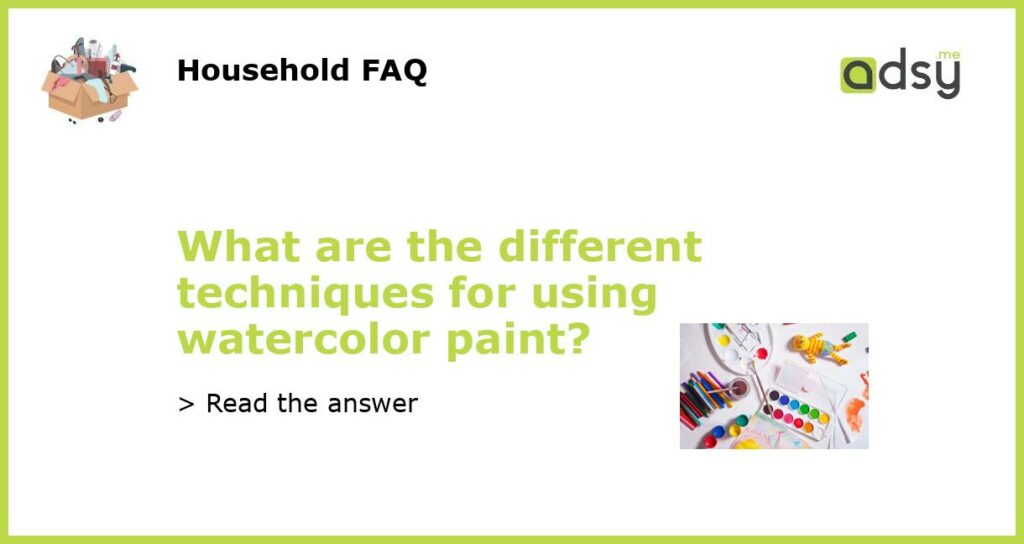Getting Started with Watercolor Painting
If you’re new to the world of watercolor painting, it can be a bit overwhelming. There are different techniques and approaches that you can take to create beautiful works of art with this versatile medium. In this article, we’ll explore some of the different techniques and methods that you can use to create stunning watercolor paintings.
Wet-on-Wet Technique
One of the most common techniques used in watercolor painting is the wet-on-wet technique. This technique involves applying wet paint onto wet paper, allowing the colors to blend and bleed into each other. This creates soft, diffused edges and a sense of spontaneity in the painting. To use this technique, wet your watercolor paper with a brush or spray bottle, then apply your paint.
It’s important to note that this technique requires a good understanding of color theory and how colors interact with each other. Experiment with different color combinations to achieve the desired effect. Remember that watercolor dries lighter, so be mindful of the intensity of your colors when applying them wet-on-wet.
Dry Brushing Technique
The dry brushing technique is the opposite of wet-on-wet. With this technique, you apply paint onto dry paper, creating crisp and defined edges. This technique is great for details and adding texture to your paintings. It allows you to have more control over the application of paint and create sharp lines and shapes.
To use this technique, make sure your brush has the right amount of paint loaded onto it and then lightly drag the brush across the dry paper. This will create feathery strokes and interesting textures. Dry brushing works best with a flat or angular brush that has stiff bristles.
Masking Fluid Technique
Masking fluid is a liquid compound that you can use to protect certain areas of your painting from being painted over. It creates a temporary barrier on the paper, which can be peeled off once the painting is dry. This technique is especially useful when you want to preserve certain areas of your painting or create fine details.
To use masking fluid, apply it to the areas you want to protect using a brush or a pen. Once it dries, you can paint over it without worrying about it affecting the protected areas. Once your painting is dry, gently rub or peel off the masking fluid to reveal the untouched areas of the paper.
Layering Technique
The layering technique involves building up layers of transparent watercolor washes to create depth and intensity in your painting. This technique allows you to create vibrant colors and subtle shifts in tone. It’s a versatile technique that can be used to create a variety of effects, from realistic landscapes to abstract compositions.
To use this technique, start with a light wash of color and gradually build up layers, allowing each layer to dry before adding the next one. This will create a sense of depth and luminosity in your painting. Experiment with different colors and layering techniques to achieve the desired effect.
Splattering Technique
The splattering technique is a fun and spontaneous way to add texture and interest to your watercolor paintings. It involves flicking or splattering paint onto the paper using a brush, toothbrush, or even a straw. This creates random splatters and specks of color.
To use this technique, dilute your paint with water to achieve a runny consistency. Then, dip your brush or toothbrush into the paint and using your fingers or a brush, flick the bristles to create splatters. This technique works best on dry paper, and you can experiment with different brush sizes and angles to achieve different effects.






